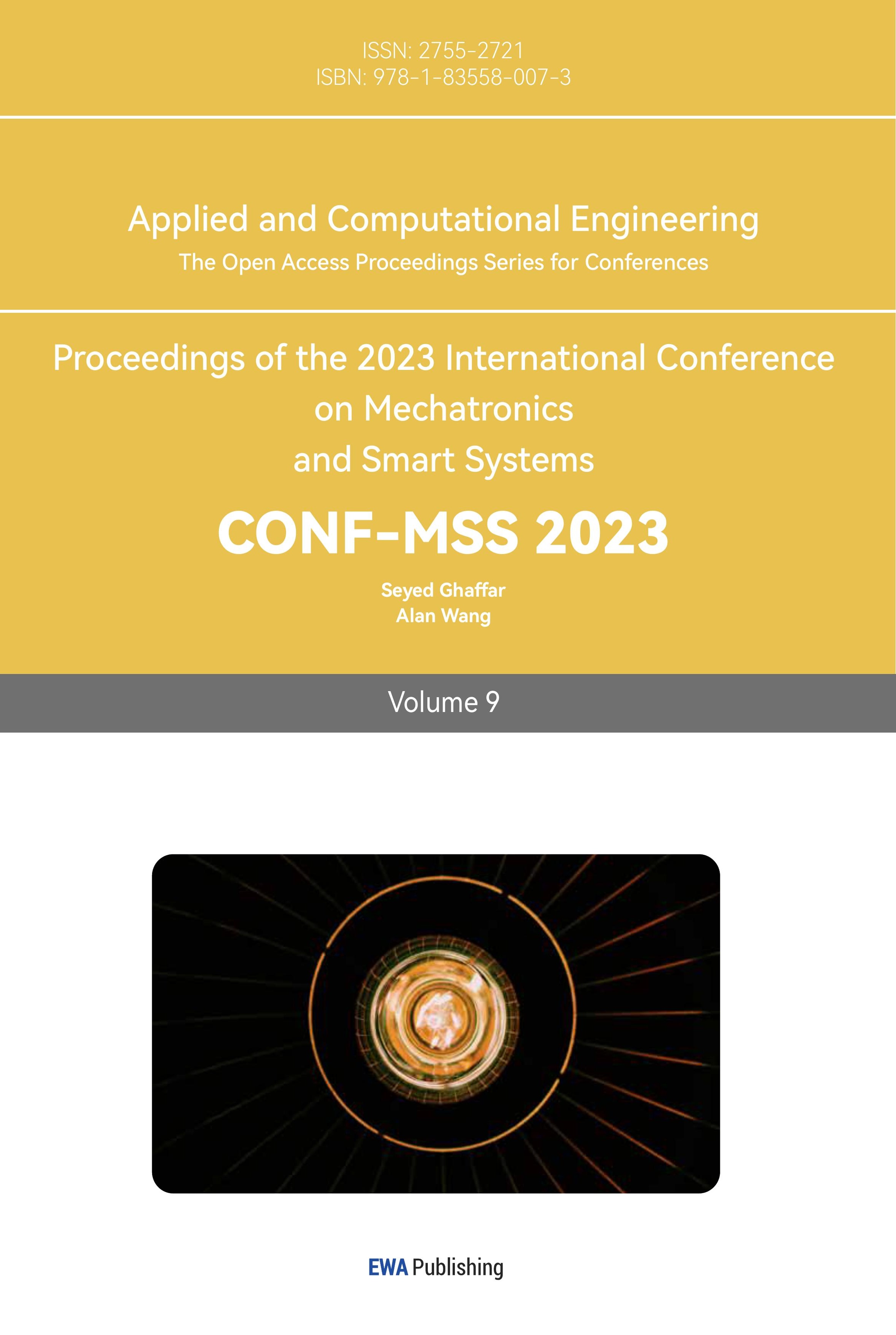1. Introduction
For more than 100 years, during the whole history of aircraft development, airplanes have significantly accelerated social and economic progress and human communication (Figure 1). But as the economy has grown quickly and conveniently, a number of risks that are bad for the environment have progressively emerged. The two primary areas of environmental damage brought on by the aircraft industry's rapid development are as follows: Firstly, the air pollution brought on by the combustion of fossil fuels in aircraft. Secondly, the effect on locals of the loud noise made by aircraft during takeoff and landing. Prior to 2020, as well as before the global COVID-19 crisis broke out, the aviation sector's carbon emissions were rising. According to the study, direct carbon dioxide emissions from 2015 to 2019 climbed by 34%. Civil aviation is currently responsible for 2.5% and 4% of global carbon emissions, respectively. Although the COVID-19 outbreak has led to a phased shutdown in the global aviation business, with the progressive management of the epidemic and the gradual rehabilitation of the air transport industry, carbon dioxide emissions from the aviation industry tend to continue to climb in the next few years. Around 1.4% of the world's greenhouse gas emissions are attributable to international aviation. The growth rate cannot be disregarded, despite the fact that the proportion is not very large. International aviation's carbon dioxide emissions might rise from 700 million tons to 2.6 billion tons by 2050 [1]. The international aviation industry, as depicted in the picture, tends to have an increasing impact on environmental issues, making it particularly crucial to find a solution to the present environmental pollution to ensure the sustainable development of the aerospace industry.
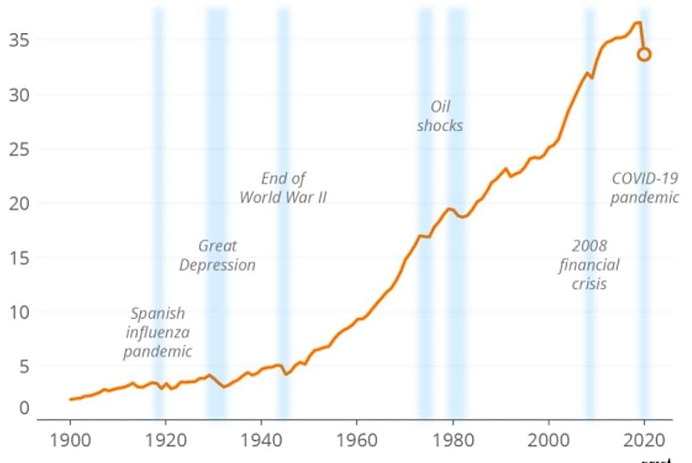
Figure 1. Global fossil emissions [2].
In 2019, the three countries with the highest CO2 emission markets for air passenger transport were the United States, China, and the United Kingdom (based on the origin of passenger flights). More than 40% of CO2 emissions from aircraft were produced by the following countries in Table 1. The average yearly growth rate of CO2 emissions in Western nations is comparatively moderate compared to that of China and India, where it is above 8% on average. Passenger flights departing from American airports have a CO2 emission intensity (CO2 emission/income kilometer) that is six units greater than the world average. While passenger flights from EU airports have CO2 emission levels that are 4 units lower than the worldwide average, passenger flights from China have CO2 emission levels that are two units higher than the average, according to Table 1.
Table 1. CO2 emission ranking of different countries.
Ranking | Departure | CO2 Emission (megaton) | Global proportion of CO2 Emission (%) | Revenue Passenger Kilometres (billion) | Global proportion of Revenue Passenger Kilometres (%) | CO2 Emission intensity |
1 | the US | 179 | 23 | 1890 | 22 | 95 |
2 | China | 103 | 13 | 1167 | 13 | 88 |
3 | The UK | 31.8 | 4.1 | 365 | 4.2 | 87 |
4 | Japan | 25.9 | 3.3 | 274 | 3.1 | 95 |
5 | German | 23.1 | 2.9 | 253 | 2.9 | 91 |
6 | UAE | 21.5 | 2.7 | 243 | 2.8 | 89 |
7 | India | 21.2 | 2.7 | 248 | 2.9 | 85 |
8 | France | 20.6 | 2.6 | 237 | 2.7 | 87 |
9 | Spain | 19.8 | 2.5 | 249 | 2.9 | 79 |
10 | Australia | 19.5 | 2.5 | 217 | 2.5 | 90 |
Other countries | Other countries | 41 | 3567 | 41 | 89 | |
Total | - | 100 | 8710 | 100 | 86 | |
Improved aircraft environmental performance and the development of green aviation are increasingly demanded by developed nations like Europe and the United States. Many organizations are attempting to lessen the environmental harm caused by aircraft [2]. The China Aviation Industry Group likewise adheres to this policy and has extensively researched multi-advanced technologies in an effort to reduce emissions and save energy [3]. These actions will, to some extent, lessen the environmental impact of aviation.
China formally proposed the dual-carbon policy objective in 2020. China seeks to establish a clean, low-carbon, and efficient energy system in all aspects by 2060 to accomplish the strategic objective of carbon neutralization. By 2030, it expects the proportion of non-fossil energy consumption to reach 25% and strives to reach the strategic goal of a carbon peak. The aerospace industry's contribution to overall carbon emissions in our nation is steadily increasing as a result of the economy's rapid growth and the quickening of the pace of time [4].
One of the key approaches to meet the demands of the national dual-carbon plan is to create new energy aviation, and it is possible to realize environmental protection and energy savings in the aviation sector in a sustainable fashion. This article evaluates the current state of new energy aviation development globally and proposes a development roadmap and overall strategy tailored to the strategic requirements of our nation, offering crucial theoretical support for China's aviation industry's transition to a low-carbon, green economy.
2. Classification of new energy aircraft
The primary distinction between electric and conventional aircraft is that electric motors, as opposed to internal combustion engines, power them. Electric aircraft can be classified as solar electric aircraft, battery electric aircraft, and fuel cell electric aircraft based on variations in electric power propulsion systems. There are hybrid airplanes in addition to all-electric aircraft. There are categories for manned and driverless aircraft for each kind.
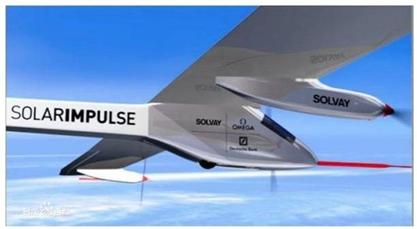
Figure 2. Solar aircraft: the Sunshine Power.
Figure 2 depicts the Sunshine Power solar plane's successful test in Switzerland on July 8, 2010. The aircraft, which took seven years to create and cost $100 million, is the first solar-powered aircraft in the world that can fly both day and night. With a wingspan of 63.4 meters, a length comparable to the Boeing 747, and a weight comparable to a standard sedan, the fuselage is composed of incredibly light carbon fiber composites. It has 12000 solar panels, high-performance poly-lithium batteries, and four engines mounted on its wings. The aircraft's engines have a combined maximum power of 40 horsepower, or 10 horsepower for each engine, and can fly at a speed of 70 kph. What's more, it's an aircraft run entirely on solar power. Several experts predict that 300 passengers will be able to travel on solar aircraft in more than 40 years. The huge solar airplane is anticipated to enter service after the sun absorption issue has been resolved and battery efficiency has been greatly increased [5].
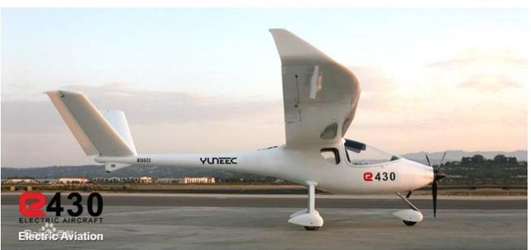
Figure 3. Battery electric aircraft: E430 electric aircraft.
The world's first commercial 100% electric E430 aircraft, manufactured in China, underwent a successful test flight on July 28, 2010, during the "Flying Conference" at Oshkosh Airport, Wisconsin, reaching a height of roughly 3000 meters (Figure 3). At the test site, there were 800000 spectators and around 10,000 aircraft, including the China E430 electric aircraft creative design team. The E430, which has a round shape and a V-shaped tail wing, a wingspan of 13.8 meters, a fuselage of roughly 7 meters, and the capacity to carry two passengers, was successfully taken offline in January 2009. Its performance is far superior to that of similar products around the world. On January 24, 2009, the E430 took off for the first time at an airport outside of Shanghai and achieved a number of technical milestones that qualify as the first in the world: the maximum takeoff weight is 430 kg; the top speed is 150 km/h; the economic speed is 95 km/h; it can be renewed for 2-3 hours; the charging time is 3-4 hours; and it costs about $5 per charge.
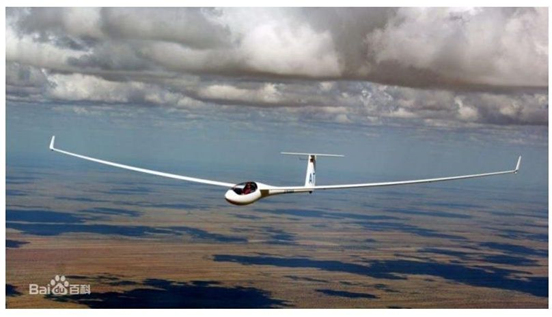
Figure 4. Fuel cell aircraft: Antalis.
Figure 4 depicts the launch of the first manned fuel cell-powered aircraft on July 7, 2009, from Hamburg, Germany. The Antalis DLR-H2 mobile glider is the name of the aircraft. It was created by the German Aerospace Center and many commercial businesses. "We have made major advances in battery efficiency and performance, and aircraft can take off on fuel cells alone," said John Dietrich Werner, an expert at the German Aerospace Center. Antalis produces energy through an electrochemical reaction with oxygen in the air using hydrogen as fuel. The maximum flight time for the aircraft is five hours straight with a 750 km radius [6].
3. Advantages and challenges of new energy aircraft
Electric airplanes use an electric propulsion system rather than an internal combustion engine, resulting in a number of benefits. The most notable benefits include close to zero emissions, great efficiency and low energy consumption, low noise and vibration levels, and comfortable rides. Additionally, it has the qualities of safety and dependability (no explosion or fuel leakage), simplicity of design, ease of use, low maintenance and operating costs, and so forth. The layout is adaptable overall, the best layout and unconventional/innovative layout may be used, and the aircraft with amazing performance can be developed to fulfill the needs of a specific purpose. These are only a few of the benefits of design. Challenges: the issue is primarily technological in nature. The largest problem in the design of electric aircraft is the excessive weight of the electric power propulsion system since its key performance index is low, the technology is still in its infancy, and it is too heavy. The main limitations of electric aircraft are these problems. There are layout and design challenges with fuel cells and hydrogen fuel storage systems for hydrogen fuel cell electric aircraft. Large-area wings on solar aircraft may have major aeroelastic issues due to their extremely large aspect ratio. Second, the price is out of line, as are the prices of the essential parts of the electric propulsion system and the research costs. Finally, there is little capacity for environmental adaptation. Electric aircraft can now only fly in favorable weather; precipitation, snow, lightning, and other adverse weather conditions prevent them from taking off. These are technically challenging difficulties, yet they must be resolved in order to satisfy the practical requirements [7].
4. Energy demand and propulsion efficiency of electric aircraft
Electric airplanes are powered by energy. When flying, electric aircraft maintain the same weight. The aircraft's necessary power when cruising could be determined as follows:
\( {P_{r}}=T{V_{c}}\ \ \ (1) \)
Where t is propeller tension, and Vc is cruise speed. When the water level patrol flies, the tension and the aircraft resistance balance then it could be calculated as [8]:
\( {P_{r}}=D{V_{c}}=WTO\cdot L≤D{V_{c}}\ \ \ (2) \)
Where L is the aircraft lift, D is the aircraft resistance, WTO is the takeoff weight of the aircraft (the weight in flight is equal to the takeoff weight), and L≤D is the ratio of flight lift to drag. The battery power consumed by cruise flight and the battery energy required for cruise flight could be calculated as follows:
\( {P_{b}}={P_{r}}\cdot η\ \ \ (3) \)
\( {E_{b}}={P_{b}}{t_{c}}\ \ \ (4) \)
Where tc is cruise flight time. The overall effectiveness of transferring the battery's electric energy into the propeller tension or culvert fan thrust is referred to as the propulsion system's efficiency. In general, the conversion efficiency between solar energy to electric energy is about 12%, and the conversion efficiency of hydrogen-electric energy is roughly 60%. The entire efficiency of transferring 100% of the battery's energy into tension or thrust is the propulsion system's efficiency. The efficiency of the propulsion system is 73% if the controller is 98% efficient, the motor is 95% efficient, the reducer is 98% efficient, and the propeller is 80% efficient. The system's efficiency can reach 75% if the reducer is not used [8].
5. Development prospect of new energy aviation
The 14th China Air Show's development prospects for new energy aircraft were discussed at a press conference held on November 8, 2022, by the China Aeronautical Industry Civil Aircraft System Engineering Research Center, which also provided a forecast and outlook for the future development of the new energy aircraft industry in China [9].
In order to achieve the green development of the aviation industry, new energy aviation is an unavoidable option. It is also a new path for China to catch up to the aviation superpower of the globe. In China, there are now solid industrial foundations and growth potential for new energy aircraft development. New energy aircraft has been the subject of successive rounds of domestic technical research and product development, as well as considerable international collaboration. New energy vehicles also have a wide range of market prospects due to the ongoing development of new energy aircraft application scenarios in China and the continued opening of low-altitude airspace. The creation of new energy aviation technology is governed by the double carbon strategic goal. This paper forecasts the roadmap for carbon reduction in China's air transport industry and allocates responsibilities to the aviation manufacturing industry, energy industry, and civil aviation industry based on demand and historical data on carbon reduction in China's aviation industry in the future. According to the data, new energy contributes 58% of all reductions in aviation emissions. The 2030 carbon peak and 2060 carbon neutralization are the important time nodes. In order to reduce carbon emissions before 2030, we mostly rely on improving current aircraft, aviation fuel manufacturing technologies, and other strategies. China will put its attention on the modernization and transformation of new energy aviation manufacturing and fuel production from 2030 to 2060 in order to finally meet the carbon neutralization objective of a 50% reduction from the peak carbon dioxide emission prior to 2019 COVID-19 outbreak [10].
In the future, self-travel and civil aviation transportation in China should be the application scene for new energy aircraft. The year 2030 marks the dawn of the Golden Age of Urban Development and Air Travel, with eVTOL serving as the market's representative and focal point. EVTOL can be utilized to supplement currently available modes of transportation and is also a great way to expand the Asian Czech low-altitude tourism aviation market. The operational cost should be favorable to civilians, and when the scale is in operation, the cost of the aircraft, as well as subsequent operation and maintenance, should be significantly lowered. The operation will be more efficient if flight noise is incorporated into the urban background noise, which bothers the locals. Manned eVTOLs with pure electric drives are cleaner, quieter, greener, and more sustainable, which fits better with the envisioned urban air traffic control system of the future. To ensure safe and reliable market functioning at this point, it is crucial to get over the technology barriers that are in the way.
6. Conclusion
The new era of non-renewable resources as alternatives to replace fuel and coal mines has been unveiled. Electric aircraft is one of the few fields in which China synchronizes with the world's leading level of development. In order to capitalize on the latecomer advantage, occupy the new technology field, lead industrial innovation in general aviation globally, and enhance the capacity for scientific and technological innovation, support for the advancement of electric aircraft in technology, industry, and the market is required.
The development of new energy aircraft is currently underway, driven by China's strategic goal of doubling its carbon emissions. To advance along this new path further and further, we must accelerate the range of projects, organize the research, and deepen the depth. To compete in the market for this new energy source, we must constantly maintain the mindset of the autonomous invention.
References
[1]. Morse, E. L., Lee, E. G., Ahn, D. P., Doshi, A., Kleinman, S. M., & Yuen, A. 2012. Energy 2020: North America, the New Middle East. Citi Global Perspectives & Solutions (Citi GPS). March, 20.
[2]. Salanm A. 2013. JournalofModern Scienceand Technology, 1(1):61≤75.
[3]. Linz M. 2013 AdvanceinManu-facturing, 1:42-49.
[4]. Monaghan A. 2017. EasyJet says it could be flying electric planes within a decade. The Guardian 27.
[5]. Grosz P. 1978. Air Enthusiast. No. 6. Pp. 154x159.
[6]. Roboam, X. 2011, June. In 2011 IEEE International Symposium on Industrial Electronics (pp. 26-31). IEEE.
[7]. Baharozu, E., Soykan, G., & Ozerdem, M. B. 2017. Energy, 140 1368-1377.
[8]. Sarlioglu, B., & Morris, C. T. 2015. IEEE transactions on Transportation Electrification, 1(1), 54-64.
[9]. Thauvin, J., Barraud, G., Budinger, M., Roboam, X., Leray, D., & Sareni, B. 2016. In 52nd AIAA/SAE/ASEE joint propulsion conference (p. 4612).
[10]. Rohacs, J., Kale, U., & Rohacs, D. 2022. Energy, 239 122420.
Cite this article
Zhang,T. (2023). Future development and prospect of new energy aircraft. Applied and Computational Engineering,9,60-66.
Data availability
The datasets used and/or analyzed during the current study will be available from the authors upon reasonable request.
Disclaimer/Publisher's Note
The statements, opinions and data contained in all publications are solely those of the individual author(s) and contributor(s) and not of EWA Publishing and/or the editor(s). EWA Publishing and/or the editor(s) disclaim responsibility for any injury to people or property resulting from any ideas, methods, instructions or products referred to in the content.
About volume
Volume title: Proceedings of the 2023 International Conference on Mechatronics and Smart Systems
© 2024 by the author(s). Licensee EWA Publishing, Oxford, UK. This article is an open access article distributed under the terms and
conditions of the Creative Commons Attribution (CC BY) license. Authors who
publish this series agree to the following terms:
1. Authors retain copyright and grant the series right of first publication with the work simultaneously licensed under a Creative Commons
Attribution License that allows others to share the work with an acknowledgment of the work's authorship and initial publication in this
series.
2. Authors are able to enter into separate, additional contractual arrangements for the non-exclusive distribution of the series's published
version of the work (e.g., post it to an institutional repository or publish it in a book), with an acknowledgment of its initial
publication in this series.
3. Authors are permitted and encouraged to post their work online (e.g., in institutional repositories or on their website) prior to and
during the submission process, as it can lead to productive exchanges, as well as earlier and greater citation of published work (See
Open access policy for details).
References
[1]. Morse, E. L., Lee, E. G., Ahn, D. P., Doshi, A., Kleinman, S. M., & Yuen, A. 2012. Energy 2020: North America, the New Middle East. Citi Global Perspectives & Solutions (Citi GPS). March, 20.
[2]. Salanm A. 2013. JournalofModern Scienceand Technology, 1(1):61≤75.
[3]. Linz M. 2013 AdvanceinManu-facturing, 1:42-49.
[4]. Monaghan A. 2017. EasyJet says it could be flying electric planes within a decade. The Guardian 27.
[5]. Grosz P. 1978. Air Enthusiast. No. 6. Pp. 154x159.
[6]. Roboam, X. 2011, June. In 2011 IEEE International Symposium on Industrial Electronics (pp. 26-31). IEEE.
[7]. Baharozu, E., Soykan, G., & Ozerdem, M. B. 2017. Energy, 140 1368-1377.
[8]. Sarlioglu, B., & Morris, C. T. 2015. IEEE transactions on Transportation Electrification, 1(1), 54-64.
[9]. Thauvin, J., Barraud, G., Budinger, M., Roboam, X., Leray, D., & Sareni, B. 2016. In 52nd AIAA/SAE/ASEE joint propulsion conference (p. 4612).
[10]. Rohacs, J., Kale, U., & Rohacs, D. 2022. Energy, 239 122420.





